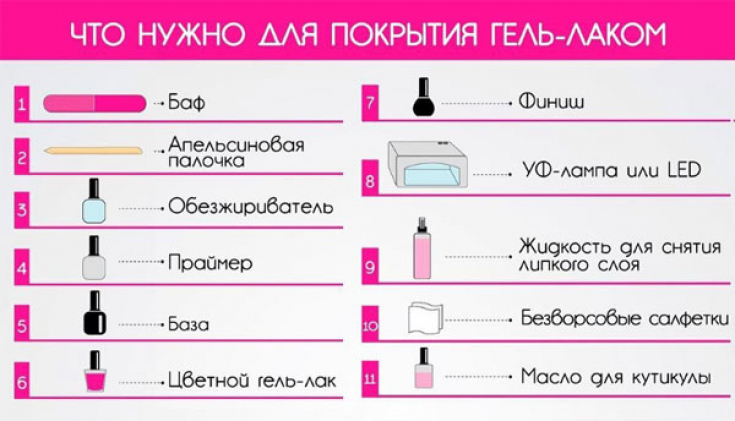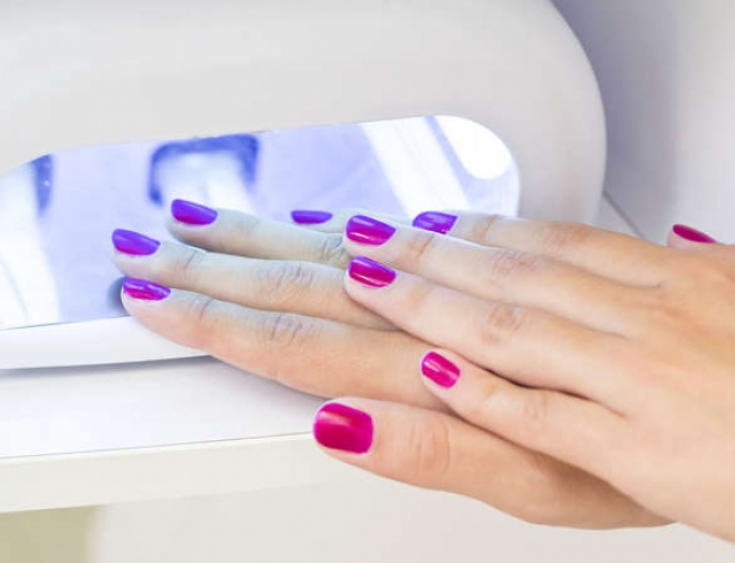Gel nail polish and acrylic manicure are becoming more and more popular every year. Maintaining the beauty of nails today is not just an aesthetic procedure, but a serious everyday necessity. The problem is that gel manicures often affect the quality of the nails and can worsen their condition.
On estet-portal.com read about the features of gel manicure, as well as recommendations for preventing complications of this beauty procedure, and maintaining the normal condition of nails.
- Gel and acrylic nail polish: what's the difference
- Peculiarities of gel nail polish
- UV for fixing gel polish: the main risks
- Recommendations for the prevention of complications after gel polish application
Gel nail polish and acrylic nail polish: what's the difference
Acrylic manicure is a type of artificial nail extension that uses both liquid and powder acrylates. These materials do not require the use of ultraviolet light for fixation.
Gel polish also has an acrylic base (acrylate monomers), however, UV light is needed to fix it on the nail plate. During the curing process, the solvents evaporate and small channels form in the nail polish layer. These channels are connected by acetone-soluble polymers.
For the latest articles, read Facebook!
Peculiarities of gel nail polish
Over the past five years, gel polishes have become very popular due to their appearance, resistance to scratches and dents. Currently, there are many different brands of gel polishes on the market. Coating materials, in addition to the main active ingredients, may contain various components that may have a negative effect on the condition of the nail plate.
Manicure with gel polish consists of the following steps:
• applying a base primer;
• application of a color layer;
• fixing the coating with the top transparent layer;
• photo-curing gel polish with UV rays.
UV fluorescent lamps are predominantly used in nail salons, as well as LED lamps, which, although more expensive, require shorter UV exposure times.
To remove a gel manicure, it is necessary to soak the nail plate with acetone for 15 minutes, and then, if necessary, remove the remaining varnish mechanically.

UV to fix gel polish: main risks
For a long time, many dermatologists have been very concerned that the ultraviolet light used to set gel polish can cause skin cancer.
How to restore nails after gel polish: simple ways
As a result, clinical studies have been conducted that show that the actual risk of oncological complications of gel manicure is minimal.
Furthermore, analysis of the photobiological safety of nail lamps has shown that exposure to ultraviolet light during manicure is quite negligible.

Recommendations for the prevention of complications after gel polish application
Given the widespread use of manicure, dermatologists should be aware of its main dangers and complications. This will make it possible to differentiate damage to the nail plate due to infections and systemic diseases from those changes that can be provoked by a banal manicure.
The main rule of a successful manicure – observance of the rules of asepsis and antisepsis.
Because any nail lesion takes 3 to 6 months to heal (the nail growth cycle), physicians should warn patients of the possible risks of manicure and advise on how to prevent its side effects. Among the tips, the most important ones are the use of quality materials, periodic breaks in the application of gel polish, and the use of products that nourish the nails.
You may also be interested in: How to Become a Great Nail Groomer






Add a comment